#transliteration
Text
I love the idea that the Homestuck Multiverse has a built in autotranslate that's just really super-lazy, making it simultaneously both Really Good and Really Shitty? Like:
ala This Comic you say a human name to a troll and its completely incomprehensible to them, because names refer to particular individuals and their meanings(or lack of) are very culturally and historically contingent and your language is utterly alien to them, but if you say "Troll![Name]", you've provided the translator with a Context, so it just searches for some person in Their culture who is contextually similar to YOUR person, and gives them that name instead XD
#biweeklydavekat#Homestuck#Homestuck Fancanon#Homestuck Languages#Computer Game Logic#Universal Translators#Context#Transliteration#Our Staff#zA Posts#zA Headcanons#The Cycle of Stupid is Complete
296 notes
·
View notes
Text

Decided to go with the transliteration of June rather than Pipiri. Pipiri relates to huddling together because of the cold, and that makes no sense for June in the Caribbean.
There's a whole wider debate about whether we should use transliterations for calendar months or the traditional Māori names which don't quite match up to the same time period. There's a good kōrero here if you're interested: https://tuhi.co.nz/blogs/news/why-we-use-the-kupu-maori-loan-words-in-our-planners
64 notes
·
View notes
Note
Hello, could you help me detect when cuneiform symbols complete a word, in a literary text for example? Because the symbols are printed on the clay tablet without spaces between words. How do you identify the end of one word and the beginning of another?
Hello! The short answer is that you can identify where words in Sumerian cuneiform begin and end with context only. So, for example, telling whether a pair of signs is ki la "to grovel, heed, excavate" or kila "weight, excavation, cellar, water meter" would depend on the surrounding signs and where in a line the signs are placed. One useful trick is that the main verb of a sentence always comes at the end - so if you can identify that verb (by a line break, its conjugation signs, etc) you can sometimes work backwards to piece together which signs go together and which do not.
The longer answer is, "what is a word? where do words begin and end?" is an ongoing and contentious question across linguistics and among scholars of many languages, including cuneiform languages. We don't know how, precisely, Sumerian speakers conceived of where the "words" of their language began and ended. So what constitutes an attached word, rather than a separate particle, is largely a modern convention rather than a reflection of some ancient concept of "word"-ness.
If you want to know a common standard for dividing up words in Sumerian, I recommend this article on the ETCSL's hyphenation policy, which, by extension, also covers when not to hyphenate (i.e. when to separate words). I hope that's helpful!
15 notes
·
View notes
Text
oh fuck i know exactly how jodie fucked up
I honestly didn't remember and then i saw the hint. And the hint didn't make me remember either it made me realize, which i definitely wouldn't have a few years prior when i was reading but now that I'm teaching? I know exactly how she fucked up. Especially when they said who she learned from. Went back to check the decode on vermouth's screen and yep. If Jodie learned to transliterate from an elementary school teacher rather than learning from someone teaching it to her as a second language? She didn't learn Hepburn. And yup she typed "hu" rather than "fu" which her colleagues who'd probably properly been taught learn. God I have to fight to teach the kids Hepburn it's so hard. Thank fuck they just finally announced that the government was going to convert but it's gonna be a while before it trickles into their education outside of English and even longer for typing. Im lucky i teach in a city that starts English at 1st grade but even then they don't get the alphabet til 3rd grade and even then it's just uppercase and sometimes fucking taught incorrectly! They say W takes 4 fucking strokes to write like what the fuck??? Anyways Hepburn romaji y'all it's important. Fuck
13 notes
·
View notes
Text
"یہ عمر بہرحال گزر جائےگی ،
ہنس ہنس کر اسے گزار یا رو رو کر"
"Ye umar beherhaal guzar jayegi,
Has-has kar ise guzaar ya ro-ro kar"
"यह उम्र बहरहाल गुज़र जायेगी,
हंस-हंस कर इसे गुज़ार या रो-रो कर"
(by some shayar whose name I forgot, p.s. agar kisi ko pata ho toh please tell)
13 notes
·
View notes
Text
Break The Ice Names, or Why Monch’s name makes sense.
Hey, it’s the guy who got really salty about people joking about Waai Fu’s name, back again to offer some context of weird translation in Arknights. Ok, so I know I said I’d talk about Fang’s name next and why that was weird, and I do have a draft for it, but I’ve seen a few posts/comments/whatever commenting on Monch’s weird name.

Monch’s name in Chinese is 莫希, pronounced Mòxī, and meaning “Nothing” or “Don’t” and “To Hope”. While the name is...depressing and kind of fitting, in this case I lean more towards this being a case of coincidence as 莫希托, read as mòxītuō, is the Chinese term for Mojitos. It’s also another name for The Mönch, which means “Monk” in German. According to the Chinese wiki page, there are two names for the mountain, 僧侣峰, pronounced sēnglǚfēng and meaning “Buddhist Monk Summit”, and 莫希峰, pronounced Mòxīfēng. In this case Monch’s weird name is a reflection of Matterhorn’s name, in that they are both named after notable European mountains.
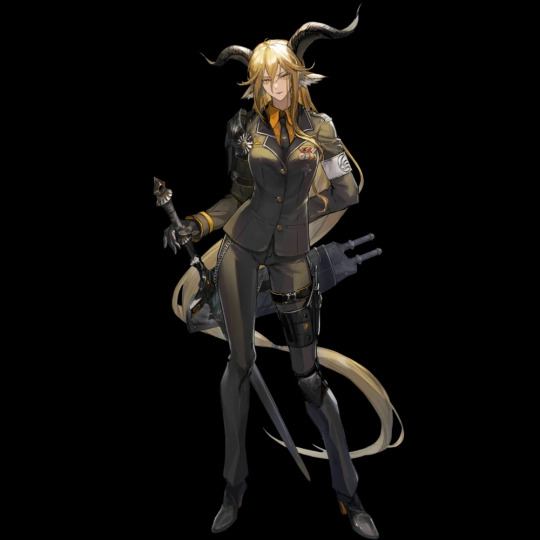
Ok, so this name is very multilayered. First, Degen is the German term used to refer to, at first, daggers before being superseded by another word, Dolch, and instead used to refer to one handed swords in general and thrust-oriented swords like rapier and smallswords or swords worn besides a uniform in general. Brecher, as I’m sure many of you can figure out, means Breaker, so in total Degenbrecher means “Swordbreaker”. Before the character was released, if you searched the term “Degenbrecher” you would likely have found an image for something like this,
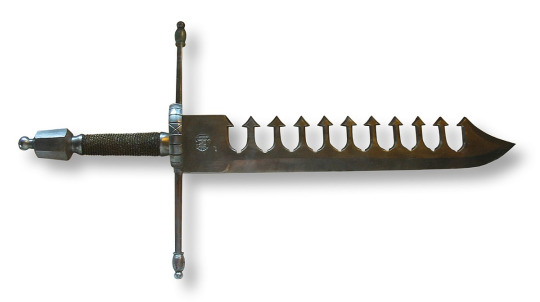
Not entirely relevant but I thought y’all would like to see weird 17th century dueling weapons. Now, where this ties back into Arknights is Degenbrecher’s Chinese name, 锏, pronounced jiǎn, not to be confused with the 剑, jiàn.
Now I assume many of you are not familiar with medieval Chinese weaponry, so I will explain. Sometimes called the Chinese Swordbreaker, the Jian is a, usually, one handed, quad-edged mace, club, or truncheon made of iron, steel, or bronze.

This is a Song Dynasty example, while this later Qing Dynasty example from the Mandarin Mansion also sports a hollow ground edge

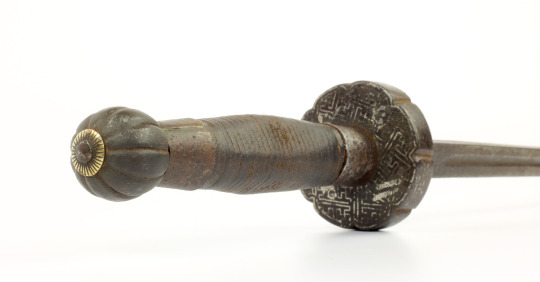
These are known as sword breakers because their shape meant one could use Jian, the sword kind, techniques with them and really fuck up the blades, much like what would happen if you took a crowbar to a swords.
Time for another tangent, there’s even a related weapon called 鞭, pronounced Biān, and meaning “whip”. Yes, in Chinese this character refers both to soft and hard whips, and we’re going to be talking about the latter here.

Also from the Mandarin Mansion, the Bian, as compared to typical Jian, looks a lot like bamboo with node like protrusions down the length. Despite what wikipedia tells you, normal examples are not 7-8 kilo each, with the above one being only 2.2 kilos, because that would be fucking insane.
Another fun fact, Degenbrecher’s internal code name is BJ, do with that as you will.
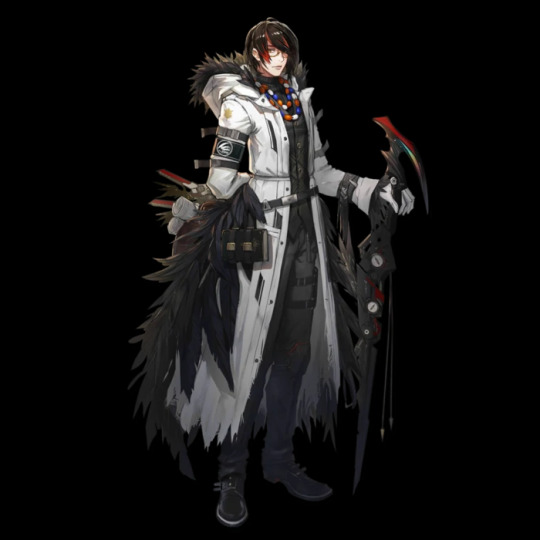
Fun fact, Gnosis is also kind of weird, but not in the way you think. Gnosis, Greek for “Knowledge” and the root of Gnosticism which is kind of a blanket term for a bunch for a bunch of Jewish and early Christian sects that were really big on mysticism and believed salvation would be achieved by participating with divinity and the resultant knowledge of divinity, which is very interesting but not really the point of this though using that association as lens to view his relation with Kjerag is also interesting but alas,
Now, where things get interesting is if you google how to pronounce Gnosticism in Chinese you get 諾斯底主義, nuòsīdǐzhǔyì, but if you google Gnosis there are two results, 靈知, língzhī, or 真知, zhēnzhī. For those curious, the former, Lingzhi, is Gnosis’ Chinese name, meaning “God” or “Spirit” and “Know” or “Wisdom”. Note this is also a different Ling from the upcoming Nian Sister who is named 令, or lìng,
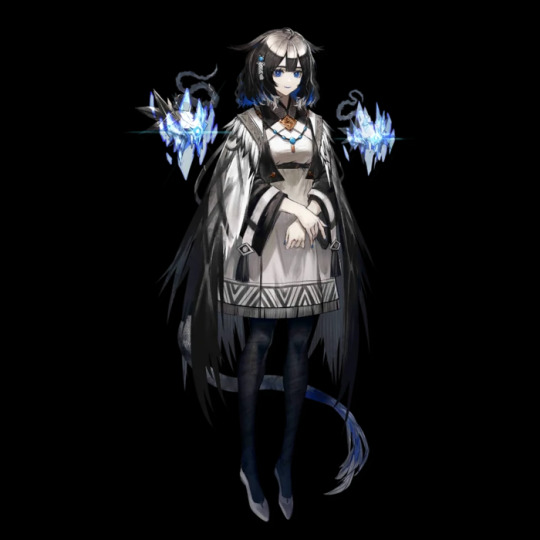
Kjera, Kjeragander, Kjarr, 耶拉, 耶拉冈德, 雅儿, Yélā, Yélāgāngdé, Yǎer
Fun fact, did you know if Chinese people have a hard time pronouncing a sound, like putting a K before a J, they’ll just drop sounds? Well know you know. Not much to say here, her Chinese name is just a transliteration of a western word and so the meaning of the individual characters aren’t as important, but now you know how to write Gund, Gundr, Gander, and Gandr. Except, turns out there are like 3 different ways to write Jormungandr in Chinese, those being 耶夢加得(Yé mèng jiā dé), 约尔蒙干德 (yuē ěr méng gàn dé), and 尤蒙剛德(yóu méng gāng dé) which again, goes to show that Chinese transliteration can be really arbitrary and subjective
120 notes
·
View notes
Text
Freaking seminary failed me! Aim's codename is Messanger. The literal translation of Malak, the Hebrew word for angel, is messenger. So bc of the transliteration stuff, Hot Sauce heard Malak, got Angel, not messenger.
#nona the ninth#harrow the ninth#gideon the ninth#the locked tomb#aim is the angel#transliteration#freaking seminary failed me#hot sauce
23 notes
·
View notes
Text
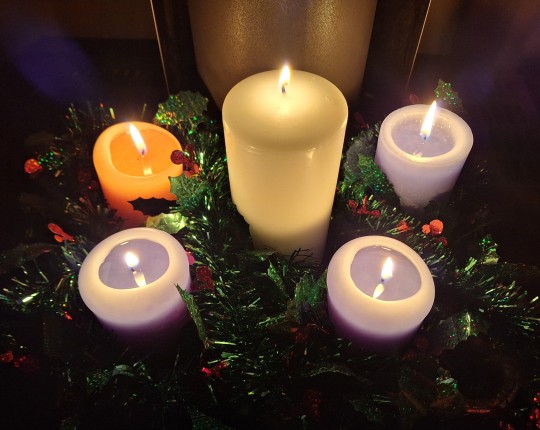
Mere Kirihimete, e hoa ma.
2 notes
·
View notes
Text
BUCK-TICK - 無限 LOOP / Mugen LOOP (Romaji)
Lyrics: Sakurai Atsushi Music: Imai Hisashi
Transliterated by: kyzakkk
Minamikaze ga kimi wo saso u
南風 が 君を 誘 う
Amai kaori kimi ga wara u
甘い 香り 君が 笑 う
Odorimashou namiuchi giwa
踊りましょう 波打ち 際
Toki wo tomete mitai kedo..
時を 止めて みたいけど‥
Watashi no yume wa tochuu de
わたし の 夢は 途中で
Togire togire kimi no yume mita
途切れ 途切れ 君の 夢見た
Hana no saki ga tsuntenarunda aa
鼻の先 が ツンてなるんだ ああ
Wasureteyu ku nanimoka mo
忘れてゆ く 何もか も
..kere do mo yume no tochuu de
‥けれ ど も 夢の 途中で
Chigire chigire kimi no yume mita
千切れ 千切れ 君の 夢見た
Mugen no LOOP nami ga kirameku
無限の LOOP 波がきらめく
Koyoi tsuki mo nuretei ru
今宵 月 も 濡れてい る
Yuugen SO BEAUTY ai to wa yoroko bi
幽玄SO BEAUTY 愛とは 歓 び
Koyoi kimi mo nuretei ru
今宵 君 も 濡れてい る
Mugen no LOOP..
無限の LOOP‥
Ana ta no yume de nemuru
あな た の 夢で 眠る
Togire togire kimi no yume mita
途切れ 途切れ 君の 夢見た
Mugen no LOOP nami ga kirameku
無限の LOOP 波がきらめく
Koyoi tsuki mo nuretei ru
今宵 月 も 濡れてい る
Yuugen SO BEAUTY ai to wa kanashimi
幽玄SO BEAUTY 愛とは哀しみ
Koyoi kimi mo nuretei ru
今宵 君 も 濡れてい る
Mugen no LOOP..
無限の LOOP‥
Mugen no LOOP..
無限の LOOP‥
Mugen I LOVE YOU
無限 I LOVE YOU
BT Discord!
7 notes
·
View notes
Text
Amazing news: The Egyptological community has agreed on a new transliteration which will hopefully unify the different systems. Even a pdf version is already available.
Apparently the link posting does not work, so here's the link: https://ice2023.com/en/news/lut
3 notes
·
View notes
Text
“Yes, today I miss him certainly very much. He was like the cool breeze during a hot summer day. He was simply an ordinary guy, who is doing his degree and struggling to maintain sanity. However, what made him special was the manner in which he used his utterances, the ways he tamed my raging storms. I don't wanna brag that he got a honey-dripping husky voice or anything, but the way he used to call me "meri jaan" was more than enough to make me believe the world does revolve around me.”
~ Anagha Karuvallil
"meri jaan" is the transliteration of hindi word meaning "my love" usually used between close friends, romantic partners etc
#spilled ink#spilled thoughts#my words#words#lit#poetry#spilled poetry#phrases#love notes#unrequited love#love is love#love quotes#admiration#i need him#transliteration#poets on tumblr#positivity#mental health#affirmations#college#degree#couples#intimacy#chit chats#writers and poets#love poem#romance#desi poetry
7 notes
·
View notes
Text
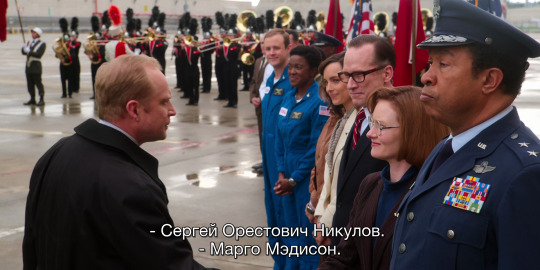
ALSO, FOR MY CURIOSITY, THE TRANSLITERATION.
1 note
·
View note
Note
why does transliterated sumerian sometimes have numbers at the end of words? like kù-sig17 (gold) its driving me insane that 17 is just chilling there but why
Hello! The number (for example) “17″ you’ll find in a cuneiform transliteration indicate that the sign is the seventeenth listed sign that can be pronounced that way. In this case, sig17 “yellow, gold” is written 𒄀, as opposed to sig(1) “evening” 𒋝, sig3 “to burn, damage” 𒉺, sig7 “to live” 𒅊, sig9 “silence” 𒋛, sig10 “to put” 𒋧, etc. all of which are pronounced identically.
The numbers were assigned over time, and the exact usage has shifted slightly - for example, in older texts you might find signs with an upward (´) or downward (`) accent, which nowadays are more clearly written as signs 2 and 3 - so “kù“ would be better written ku3 𒆬 “metal”. A sign without a number, like sig 𒋝 “evening”, is actually sig1, but we never write the “1″ for convenience. In a dictionary, entries are listed by their sign name + number, so all the words starting with “sig” come before those starting “sig2″, then “sig3″, etc.
On this blog, I normally write as though Sumerian were a modern language, ignoring the cuneiform sign distinctions - so ku3-sig17 “gold” I’d write as just kusig - unless it’s needed for clarity. I hope this explanation has been helpful!
47 notes
·
View notes
Note
Do you use transliteration in your calligraphy?
Na'Shaya! 🖖 I do transliterate things like proper names or nouns that Vuhlkansu borrows from Federation Standard English, but most pieces are fully in Vuhlkansu.
17 notes
·
View notes
Photo
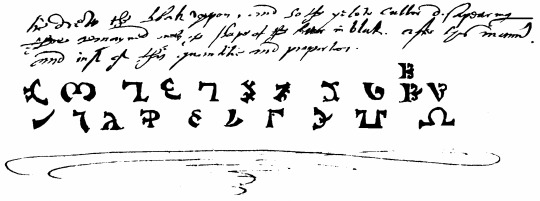
The Enochian Language, a Medieval European “angelic” (read, fae) constructed language created by two very successful con artists, is mostly based on glossolalia with some snippets of English, Romanian, and Ecclesiastic Latin (the latter implying that its “U” and “I” are like they are in Ecclesiastic and Archaic Latin, so like in Romanian), which makes no sense given its supposed prehistoric origin. To summarize, here, in given order, are the letters, the script of which is right-to-left like in abjads and some variants of Runic scripts:
B/b
C/c: Like in English (makes no sense in context of its supposed origin)
G/g: Roughly the voiced equivalent of C above (ditto)
D/d
F/f
A/a: Like an “ah”, as in the Elizabethan English (among other languages) A/a, not quite like the modern version
E/e: Like an “eh”, as in the Elizabethan (among other languages) E/e, not quite like the modern version
M/m
I/i: Like the Romanian I/i, so it can be a vowel or a consonant (like in Iad, meaning “devil” and identical to the Romanian word for “hell”, for the latter while also equivalent to its linguistic origin, “Hades”)
Y/y or J/j: Syllable-final semivowel equivalent of I/i, differentiated from I/i with a dot
H/h: Like in Elizabethan English, the exact use varies but it sounds like “h” by itself initially
L/l
P/p
Q/q: Like “qu-” in English
N/n
X/x: Like in English
O/o: Like in Elizabethan English, not quite like the modern version
R/r
Z/z
U/u or V/v: Like in Archaic Latin, so like U/u in Romanian and Ecclesiastic Latin, u-equivalent to I/i above
S/s
T/t
Everything not given further details sounds like one would expect, and some English-derived consonant-digraphs are present, such as ‘ph’ (sounds identical to F/f), ‘th’, ‘sh’, and ‘ch’ (the sound varies, but it often sounds identical to the hard sound of C/c, presumably especially before E/e and I/i)
“True Enochian” could be applied to either a sci-fi or fantasy setting, and with what I know about ancient languages and some ancient non-semanto-phonetic scripts, I have some ideas, which will be listed below in a Semitic-derived order in the form of an abjad:
“E” - [null] or `/’: The null consonant, occurs either initially where a word begins with a vowel or to indicate a lengthened A/a or E/e, may indicate a glottal stop instead medially
“B“ - B/b or V/v: Voiced bilabial, hard in general but can be soft in some interpretations
“G“ - G/g or Ȝ/ȝ: Voiced velar, equivalent as such to the “B“ base but the soft version may have a “(d)zh“ sound instead
“D“ - D/d or Ð/ð: Voiced dental, ditto
“A“ - H/h or `/’: Glottal, H/h if soft or `/’ if hard, may also come after some vowels to indicate increased length of E/e in the manner of [null]
“U“ - V/v or W/w: Voiced labial, can be either the consonant equivalent to U/u or like the soft interpretation of “B“, sed to indicate a lengthened U/u or O/o
“Z“ - Z/z: Either like what one would expect it to sound or like some sort of ‘tz‘ sound
“H“ - H/h, Ħ/ħ, or X/x: Like some sort of h-sound, the exact interpretation may vary
“I/Y/J“ - J/j: Consonant equivalent to I/i, may be ised to indicate a lengthened I/i or E/e
“C“ - K/k or X/x: Voiceless velar, voiceless equivalent to “G” above
“L” - L/l: Pretty much as expected
“M“ - M/m: Ditto
“N“ - N/n: Ditto
“X“ - S/s: Like “ss“, possibly voiced in some cases
“O“ - `/’, Q/q, or Ɛ/ɛ: Like a glottal or pharyngeal stop, possibly could indicate a lengthened E/e or O/o
“P“ - P/p or F/f: Voiceless bilabial
“Q“ - Q/q: Could be either like a throaty hard velar sound or a pharyngeal stop
“R“ - R/r: Could be either rolled or not
“S“ - Ş/ş: Like what one would expect “sh“ to sound, could be voiced in some cases
“T“ - T/t or Þ/þ: Voiceless dental
The only one of the original 22 not accounted here is the one just before J/j. Also, this is only taking Canaanite/Hebrew languages into consideration as equivalents. Either way, consonant differentiation could be indicated by some sort of diacritic, as would each vowel and possibly a lack thereof.
For the null base, the idea is that certain other bases would just be that one with diacritics, such as J (palatalization, as in -j), S (-s or s-), Ş (ş- or -ş) V/W (labialization, as in -v/w), the pseudo-A (aspiration, glottalization, doubling, or hardening), the pseudo-O (pharyngealization, glottalization, or doubling), R (retroflex), or N (nasal). That would make sense if one considers that the Dee/Kelly font does not have to be the original and would be highly unlikely to be anything but a fancy version. This could make the null consonant the one many others are built upon, and of course the palatalization diacritic would be the easiest to get from that font given the similarity to the presented versions of the bases.
If I was to apply that to the Verden Chronicles, it would represent a Verden-born human language without close Terran languages but instead based on preexisting extraterrestrial ones, and I could expand that into a language family at least in the lore. Also, there would be an Enochian civilization that uses/used said language and similar ones.
The SCP Foundation website mentions “High Enochian”, evidently supposed to be the original that John Dee and Edward Kelly screwed up for their own gain. In-universe, Dee was one of the Order of the Night (a real life organization given an SCP spin here), a group of alchemists who found a way to contact Alagadda, an inter-universal city-state ruled by malevolent gods but not inherently hostile itself. The implication here is that Hich Enochian is one of if not the only official language of Alagadda, despite what the Horizon Initiative (an in-universe Abrahamic-themed Foundation knockoff) seems to think judging by another anomaly (it makes sense in context, but it’s a sapient, talking whale made into a ship/theater through unholy, possibly Sarkic, magick, not that it seems to mind).
From a Foundationverse perspective, High Enochian, as a language native to a place that makes little to no sense given the physical laws of baseline reality at least from a spatial, gravitational, and perceptional point of view, would actually be not only stranger but literally unpronounceable to baseline humans to at least some extent. If unrelated to Alagadda in origin, it would instead be the language of a prehistoric Enochian civilization only vaguely alluded to in other articles (the closest thing to a consistent canon given they represent events set in different parts of the multiverse), and it would be pronounceable but likely following a different logic from what I described in detail. I prefer the Alagadda idea myself, partly because I like the idea of the Horizon Initiative to be too willfully ignorant to accept that the language itself is not even remotely what they think it is, and that would be played for nightmare fuel somehow, like a linguist ending up being only capable of sounds no creature on Earth should be able to make as a result of trying to sound it out over an extended period of time and eventually coughing up blood. Maybe it could be both at once, as in High Enochian being of Alagaddan origin but being derived from an earlier human language, but that would be unlikely.
Coincidentally, there is an “Enochian” species (apparent angel-equivalents of the evil god Dagon) in Ben 10: Alien Force, and that setting’s equivalent “True Enochian” would most likely be their language if not some other nonhuman language. The trouble is that said setting does next to nothing to expand on the concept, but that is most likely to avoid overdoing it on the worldbuilding, not that it’s perfect or anything, of course.
1 note
·
View note
Text
Dying Wish (Yuukoku no Moriarty 1st theme, translit)
So I decided to mess around with this a bit last night.
The song has already eaten my brain, but as a linguist, the thing that fascinates me about this theme song is how often the lyrics have double meanings slapped on top of them. Which of course, makes translating it even more interesting and I’ll leave that to another post.
The kanji is online - which is good because although I have the CD, the lyrics on the sleeve are white on black and tiny, so kind of hard to read. But what I didn’t find online is the glossing, which is often something completely different from what is being sung.
Language note about glossing and furigana.
I’ve mentioned it before in a Daiya post, but in Japanese, kanji word pronunciation is sometimes indicated with what is known as furigana - small phonetic hiragana or katakana characters positioned either above (in l-r script) or to the right (in t-b script). In much manga etc, most kanji words are glossed with this furigana, so that people aren’t hampered from understanding by their reading age (certain kanji are taught at certain stages of school and so on).
But this habit gives Japanese another magical ability, which is to give one word two meanings at the same time. In Daiya terms, that often means things like a name, Sawamura, being glossed with the furigana for Ace, and so on.
But in the case of the Moriarty theme, this is far far more extreme. And it’s hard to write that out in transliteration. But I’ve done my best.
Every word in brackets is the actual kanji word in the lyric. These bracketed words appear after the word that is actually sung instead. So for example:
yume (risou) <----yume - meaning dream - is the lyric sung, but risou - meaning ideal - is the word written in the lyrics. Risou 理想 is glossed with the furigana yume ゆめ, indicating that in this case, risou = yume.
Dying Wish Lyrics
Tsumi o kakushite tada you MIST
Nigirishimeru wa sabaki no LIST
Yatsura wa umeru (maisou*) himitsu (kanzen hanzai) no CIST
Sore ga kimi e no dying WISH
Dare ka no nakigoe (himei) o haritsukete wa warau
Bloody world, hikari (kibou) no nai DYSTOPIA (sabetsu shakai)
Hana (koufuku) wa sakanai
Shiitagerareta mama, sono te o kobameite iru yori, saa
Owari o hajimeyou
Sono tamashii (seirei) mamoru (kyuusai*) tame ni kowase
Mezameru no sa kokoro yomigaeru
When lose your life
Lord of crime,
hora yume (risou) no ikenie
Itsuka yakareyoutomo jiyuu wa tokoshie
Maths o umetemo tokenai TEST
Asu o kaete’ku kotae (houteishiki) o GUESS
Machi (butai) ni afureru shibai (enmoku) wa MESS
Uso de moyashite (enjou) HORRIBLE FEST
Yogoshita tenohira de himitsu no moji (kyakuhon) o kaku
Bloody world hibikiwataru EUPHORIA (tousuikan)
Yami (shinsou-shinri) no kakumei
Jama-mono ni naretara,
dare mo ga kusari (joushiki) o hikichigiru sa
Atarashii maku ake
Sono namida (higeki) tomeru tame ni nagase
Furikiru no sa kokoro mitasareru When lose your life
Lord of crime namae naki ikenie
Hateru toki (isshun) ni umareta jiyuu o kamishime
Tadashiki sacrifice
Shizuka ni close your eyes
Michibiku sympathize
Tachiagare, kami ni somukite
Sono inochi (seimei) ikasu tame ni ikiro
Sashidasu no sa kokoro ugokaseru When lose your life
Livin’ in the darkness night ah, yagate
Kimi ga mitsuke soshite In the end
We’re lord of crime、hora yume (risou) no ikenie
Itsuka yakareyoutomo jiyuu wa tokoshie
*Note for linguists, these two words are kanji compounds, 埋葬(MAISOU - burial) 救済(KYUUSAI - relief, rescue). In the lyrics, both are followed by an unnatural ‘ru’る , but this connected to the glossed pronunciation above them (umeru - to bury, and mamoru - to protect, respectively).
#Yuukoku no Moriarty#Moriarty the Patriot#Dying wish#lyric#language#transliteration#blah#language geek is me again
7 notes
·
View notes